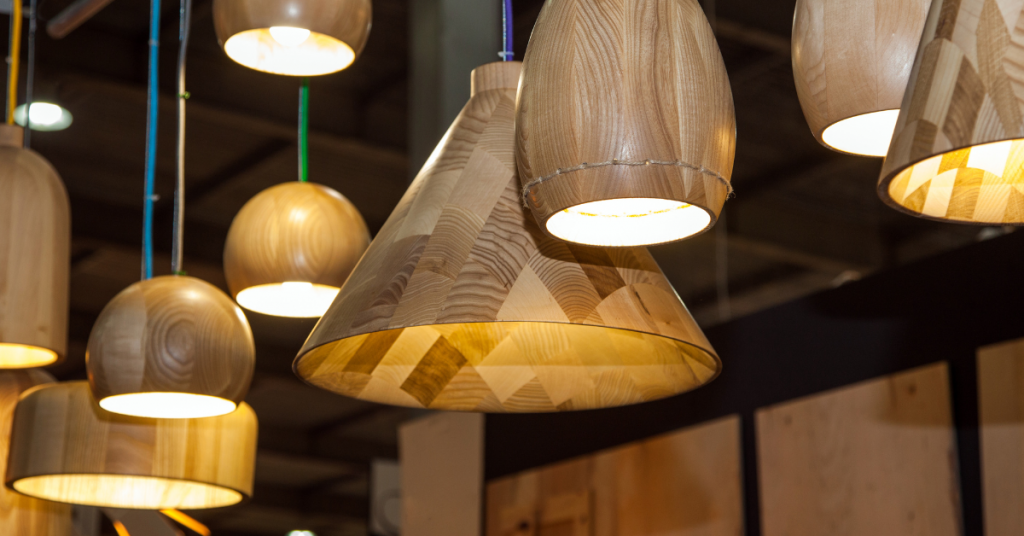
Understanding Different Light Fixtures
Choosing the right lighting can make a room feel welcoming and work better for daily tasks. Ambient, task and accent lighting each play a role in how you use a space. Ambient fixtures fill the room with general light, task lights focus on specific areas where you need more clarity, and accent lights draw attention to features like artwork or architectural details.
Ambient fixtures often include ceiling lights that mount directly to the roof of a room. By spreading soft light evenly, they stop corners from feeling too dark. Rooms used for cooking or working can benefit from fixtures built into the ceiling, such as recessed down lights, which send light straight down and reduce shadows on counters and desks.
Task lighting focuses on where activities take place. In kitchens and over dining tables, pendant lights hang low to shine light directly onto the work surface. These fixtures can hold one or more bulbs, giving you clear vision for baking, eating or reading. A well-chosen fitting not only houses the bulb securely but also matches the look of the room. Simple light fittings can be swapped out when styles change or when you decide to switch from one bulb type to another.
Accent lighting highlights points of interest. In a living room with high ceilings, a single chandelier can become a centrepiece, drawing eyes upward and adding style without overwhelming the space. In work areas or garages, long rows of fluorescent lights offer crisp, bright illumination across benches or hobby tables. Modern versions of these tubes are slimmer than older models and make it easier to keep a workshop or laundry room well lit.
Matching Fixtures to Your Rooms
In living rooms where you relax and entertain, a central fixture may provide overall brightness. Complementing that with smaller fittings near seating areas helps people read or stitch without straining their eyes. Installing a few down lights around the edges gives a smooth, even glow for movie nights or gatherings.
Kitchens often need a mix of lights. Above the island or sink, a row of pendants gives task-focused light that helps with chopping and plating. At the same time, a main ceiling fixture ensures that shadows from cabinets do not make the space feel gloomy. Choosing bulbs that mimic daylight in colour temperature keeps ingredients looking true to tone.
Bedrooms benefit from soft overhead light paired with bedside fittings for reading. If you lack space for bedside lamps, it is possible to hang pendants slightly above or beside the bed to free up table room. These choices let you adjust brightness for winding down without having to rely on a single fixture.
Bathrooms demand bright, even illumination for grooming. Ceiling lights can fill the room with light, while down lights above the mirror cut down on dark patches. Placing lights on either side of a mirror helps avoid harsh shadows when shaving or applying makeup.
Home offices become more pleasant with at least two sources of light. A desk lamp aimed at paperwork stops screen glare, and ambient lighting reduces eye fatigue when looking away from the monitor. Modern LED options fit neatly into fixtures designed for classic bulbs, making upgrades simple.
Saving Energy and Money
Switching out old bulbs pays off quickly. LED lights use far less power than traditional incandescent or halogen lamps and last many times longer. By checking the packaging, you can match a LED option to the brightness you need while cutting electricity use. Many fixtures now come with LED modules built in, so you do not have to worry about finding the right bulb type later.
Adding dimmer switches to ambient fixtures gives even more control. Lowering the light in the evening sets a calm mood and reduces energy use further. Choosing bulbs and controls that work together ensures smooth dimming without flicker.
Easy Steps for Safe Installation
When fitting new lighting, always measure your room to confirm the scale of the fixture. A light that looks right in a showroom may dominate a small room or get lost in a large one. Reading recommended room coverage on product labels guides your choice.
If wiring seems complex, hiring a licensed electrician protects you from shocks and ensures the work meets safety standards. Professional installation also means you can run new circuits if you plan to add many fixtures or high-wattage bulbs.
Over time, dust can settle on bulbs and fittings, dimming light output. A gentle wipe with a dry cloth restores clarity. For fixtures that sit higher, use a stable ladder and turn off power at the switch before cleaning.
A Real-Life Example
A couple turned a seldom used dining room into a family study and homework spot. They kept their existing pendant over the table but added six LED down lights evenly around the ceiling. During the day, kids sat at the table under cool white LEDs to work on projects. In the evening, they switched to a warm bulb in the pendant to keep dinner time cosy. The mix of lighting made one room do double duty without extra cost or wiring work.
Choosing the right blend of ambient, task and accent lights transforms each area of a home. Simple updates such as swapping to LED and adding a dimmer switch can cut bills and boost comfort. By matching fixtures to the size and purpose of every room and keeping maintenance easy, lighting becomes both practical and welcoming.